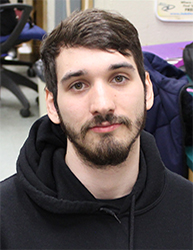 UConn Alum Seth March (’22) has joined the CAMMA Lab as a postdoc. Seth, earned his Ph.D. this year in Inorganic Chemistry under the advisement of IMS Director Steven L. Suib. Seth served as a research assistant and a teaching assistant and has extensive experience in materials characterization and data analysis.
UConn Alum Seth March (’22) has joined the CAMMA Lab as a postdoc. Seth, earned his Ph.D. this year in Inorganic Chemistry under the advisement of IMS Director Steven L. Suib. Seth served as a research assistant and a teaching assistant and has extensive experience in materials characterization and data analysis.
Month: September 2022
Menka Jain is Co-organizer of 28th IWOE
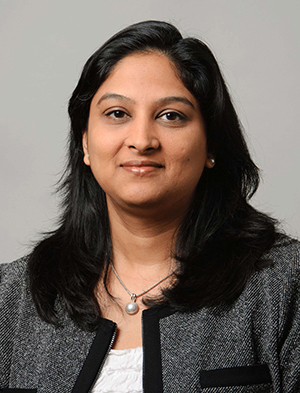
The International Workshop on Oxide Electronics (IWOE) series has become an important venue to discuss recent advances and emerging trends in this developing field. The aim of the workshop is to provide an interdisciplinary forum for researchers – theorists as well as experimentalists – on understanding the fundamental electronic and structural properties and also on the design, synthesis, processing, characterization, and applications of (epitaxial) functional oxide materials.
Associate Professor of Physics and Institute of Materials Science (IMS) faculty member Menka Jain is co-organizer of the 28th International 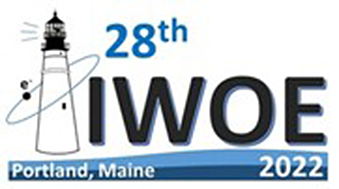 Workshop on Oxide Electronics (IWOE) to be held October 2-5 in Portland, Maine. Dr. Jain serves on the program committee with Ryan Comes of Auburn University, Charles H. Ahn of Yale University, and Divine Kumah of North Carolina State University. She is also the designer of the logo for the workshop (pictured).
Workshop on Oxide Electronics (IWOE) to be held October 2-5 in Portland, Maine. Dr. Jain serves on the program committee with Ryan Comes of Auburn University, Charles H. Ahn of Yale University, and Divine Kumah of North Carolina State University. She is also the designer of the logo for the workshop (pictured).
The workshop will showcase results of critical scientific importance as well as studies revealing the technological potential of functional oxide thin films to create devices with enhanced performance.
Menka Jain Receives NSF EAGER Funding

NSF EArly-concept Grants for Exploratory Research (EAGER) provide funding for work in its early stages on untested, but potentially transformative, research ideas or approaches. The work of EAGER grantees is usually considered high-risk, high-reward as it involves radically different approaches, applies new expertise, or engages novel disciplinary or interdisciplinary perspectives.
Associate Professsor of Physics and IMS faculty member, Menka Jain, has been award NSF EAGER funding for her research entitled CRYO: New Quantum Elastocaloric Demagnetization Refrigeration for the Millikelvin Range, which seeks to develop new technology in refrigeration.
Jain explains that, due to the increasing scarcity of helium and lack of portability or scalability of current technologies, there is a growing demand to develop alternative refrigeration technology that can cool below 1 Kelvin for supporting emerging applications, such as quantum sensors and quantum computers. The overarching goal of her research is to realize a solid-state millikelvin Quantum Elastocaloric Adiabatic Refrigeration technology in which a cooling cycle will be achieved via periodic application of elastic strain/stress, without or with small a magnetic field.
“Such an approach has the potential to materialize into a groundbreaking discovery for on-chip scalable cooling applications,” Jain explains.
Jain’s research will train a diverse group of students in thermal, material and quantum sciences. This training will be provided through the development of a new curriculum focusing on low temperature cooling in an advanced undergraduate teaching laboratory, in research projects through the McNair program for underrepresented undergraduate students, and through graduate-level research projects.
The research project is jointly supported by the Division of Chemical, Bioengineering, Environmental and Transport Systems and the Division of Materials Research.
IMS Faculty Members Awarded Internal Funding
The Office of the Vice President for Research (OVPR) offers internal funding for faculty projects that are at critical stages of development. This funding is provided to serve as high-leverage, strategic investment in outstanding faculty research projects. The Institute of Materials Science is proud to announce our faculty members who have received internal funding for the 2022-2023 academic year. We congratulate each of our faculty on their research accomplishments.
Scholarship Facilitation Fund

Menka Jain, Physics
Workshop: Quantum Matter: Dynamics and Sensor
Ying Li, Mechanical Engineering
Publication in Science Advances, a Premium Open-access Journal for Maximum Impact
Na Li, Pharmaceutical Science
Open access publication: Mechanisms and extent of enhanced passive permeation by colloidal drug particles
Xiuling Lu, Pharmaceutical Science
Imaging Tumor Heterogeneity and the Variations in Nanoparticle Accumulation using Perfluorooctyl Bromide Nanocapsule X-ray Computed Tomography Contrast
Helena Silva, Electrical and Computer Engineering
Circuit Simulation of an Erasable Physical Unclonable Function using a Phase-Change Memory Array
Research Excellence Program

Kelly Burke, Chemical and Biomolecular Engineering- $25,000
Implantable Degradable Films for Right-Size Post-Operative Pediatric Pain Control
Bodhisattwa Chaudhuri, Pharmaceutical Science- $49,998.08
Continuous manufacturing (CM) of the biological drug product for pulmonary drug delivery
Co-PIs: Yu Lei, Chemical and Biomolecular Engineering; Yanchao Luo, Nutritional Sciences; Matthew Stuber, Chemical and Biomolecular Engineering
Jie He, Chemistry- $50,363.63
C-H Bond Electroactivation of Nonpolar Organic Substrates in Water: Enzyme-Mediated Reaction Pathways in Microemulsions
Co-PIs: James Rusling, Chemistry
Menka Jain, Physics- $50,000
New approaches for on-chip cooling for applications in electronics and quantum devices
Co-PIs: Ilya Sochnikov, Physics
Seok Woo Lee, Material Science and Engineering- $25,000
Investigation on cryogenic shape memory effects of kinetically frozen ThCr2Si2-structured intermetallic compounds
James Rusling, Chemistry- $50,000
Rapid CRISPR-based blood test for early Alzheimer’s disease
Co-PIs: Breno Diniz, Uconn Health, Center for Aging; Islam Mosa, Chemistry
Tannin Schmidt, Biomedical Engineering- $74,853
Role of Proteoglycan 4 (PRG4) in Inflammatory Bone Loss
Co-PIs: Sun-Kyeong Lee, Medicine; Joseph Lorenzo, Medicine; Kshitiz Gupta, UCHC Biomedical Engineering; Alix Deymier, Biomedical Engineering
Yi Zhang, Biomedical Engineering- $49,863.63
A wireless, battery-free multimodal neural probe for simultaneous neuropharmacology and membrane-free neurochemical sampling in freely moving rodents
Co-PIs: Alexander Jackson, Physiology & Neurobiology; John Salamone, Psychological Sciences; Xudong Yao, Chemistry
Challa Kumar to Give Writing in Science Workshop at BITS
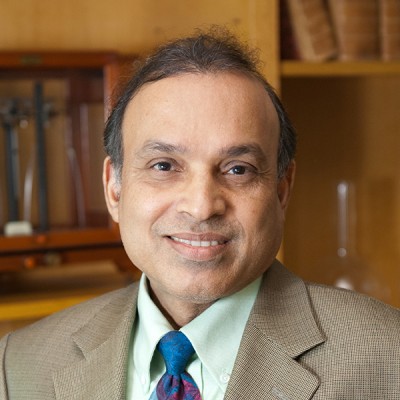
IMS faculty member Challa Vijaya Kumar will give the Writing in Science and Engineering Workshop at Birla Institute of Technology and Science (BITS). 253 Ph.D. students from various departments around the four campuses of BITS have enrolled in the 4-day 12-hour workshop which will be held live with virtual attendance available.
Dr. Kumar is currently serving as a Fulbright-Nehru Distinguished Chair and has embarked on a series of seminars across India. Awards in the Fulbright Distinguished Chairs Program are viewed as among the most prestigious appointments in the Fulbright Scholar Program.
In addition to the upcoming Writing in Science and Engineering workshop, Kumar has presented seminars at the Indian Institutes of Science Education and Research (IISER) Tirupati and Osmania University where he was presented with a certificate of appreciation for his support in organizing the “Current Trends and Futuristic Challenges in Chemistry” seminar in July.
Anson Ma Named UTC Professor in Engineering Innovation
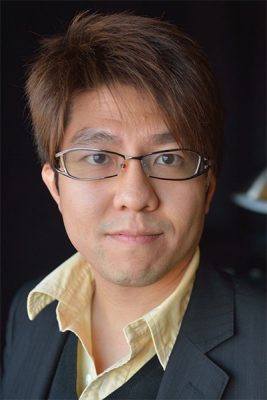
Anson Ma from Polymer Program at IMS, with joint appointment in the Department of Chemical and Bimolecular Engineering, has been named the United Technologies Corporation (UTC) Professor in Engineering Innovation, effective 23 August 2022. This professorship has been established to recognize the exceptional achievements of young faculty who exemplify excellence in the areas of research productivity and impact, teaching contributions, and service contributions and are at the very top of their area of research.
Ma’s research group focuses on rheology and 3D printing. He currently serves as the UConn Site Director of the National Science Foundation (NSF) SHAP3D Center for Additive Manufacturing. He has received a number of awards, including Distinguished Young Rheologist Award from TA Instruments, NSF CAREER award, Arthur B. Metzner Early Career award from the Society of Rheology, 3M Non-Tenured Faculty Award, Early Career Award from the American Association of University Professors (AAUP)-UConn Chapter, UConn Polymer Program Director’s Award for Faculty Excellence, and U.S. Air Force Summer Faculty Fellowship.
Richard Parnas on FOG, Biofuels, and Wastewater Management
Professor Emeritus of Chemical and Biomolecular Engineering, Richard Parnas, has been working on solutions to the oily waste we humans produce on a daily basis. He has been on a journey to convert that waste into usable energy. This quest has led to the patent of proprietary technology and the formation of REA Resources Recovery Services, a company he co-founded. Along with his partners in the company and in partnership with UConn, Dr. Parnas set about to convert FOG (Fat, Oil, Grease) into biodiesel for the benefit of municipalities in the state.
In 2019, REA contracted with the City of Danbury to build a FOG to biodiesel processing facility at the city’s wastewater treatment plant. That project has entered the construction phase and Parnas, REA, and UConn are now looking forward to the day the facility converts its first oily waste into usable biodiesel. IMS News reached out to Dr. Parnas about his research, the Danbury project, and the future of wastewater management.
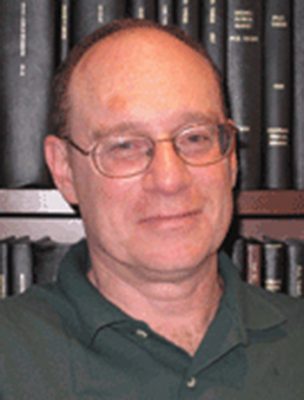
You have been researching and developing methods to convert FOG (Fat, Oil, Grease) into biodiesel fuel since 2006. When did you first become interested in biofuels and what about biodiesel, in particular, led you down your current path?
I’ve been interested in biofuels, and green processing and green materials in general, for many years before coming to UConn. One of the important motivations for joining UConn was to participate in the development of the green economy. An undergraduate helped get me started working on biodiesel in the summer of 2007 by simply requesting my help to set up a biodiesel synthesis reaction in a fume hood.
When you became Director of the Biofuel Consortium here at UConn, you moved the bar from six gallons of biofuel produced over the course of a year to over 50 gallons continual production daily less than three years later. When did you realize the scale at which you might be able to convert FOG into biodiesel? What were the obstacles you faced and how were they overcome?
We used the yellow grease from UConn cafeterias to make biodiesel at that time, and the scale of operations was determined by the yellow grease production rate from the cafeterias. As a Chemical Engineer, my goal is always to maximize the use of available raw materials, and waste as small a fraction of that raw material as possible. Shortly after we started the Biofuel Consortium, we polled the various food service establishments at UConn to determine the yellow grease availability, and found it to be over 100 gallons per week. We then designed, built and installed a 50 gallon batch system, and produced 2 or 3 of the 50 gallon batches each week.
There were a number of obstacles. Production at that scale is not a typical academic activity so we faced skepticism from the facilities folks that ran the fuel depot for the buses. They asked if our fuel would be any good and how we would prove it to them, so we had to set up testing capability. Our testing was developed and run by Prof. James Stuart, an analytical chemist. Prof. Stuart and I received a grant of over $600,000 dollars to set up a biodiesel fuel quality testing facility in the Center for Environmental Science and Engineering (CESE) to test our biodiesel and the biodiesel produced by private companies. We also faced skepticism from the UConn administration since we were operating at a much larger scale than is typical. Safety concerns are important when conducting such operations with students who are just learning how to handle chemicals.
REA Resource Recovery Systems, a company which you co-founded and worked in collaboration with UConn to patent exclusive technology, has entered Phase 4 of its planned development of a 5000 square foot facility in Danbury that will turn FOG into biofuel. How important is wastewater management for municipalities and what will be the benefits for the City of Danbury once the facility is online.
planned development of a 5000 square foot facility in Danbury that will turn FOG into biofuel. How important is wastewater management for municipalities and what will be the benefits for the City of Danbury once the facility is online.
I joined my two partners, Al Barbarotta and Eric Metz, to found REA at the end of 2017. The UConn patents were already in place for a piece of core technology called a counterflow multi-phase reactor that plays a key role in both the chemical conversion and in the product purification. Prof. Nicholas Leadbeatter from Chemistry is a co-inventor with me on that reactor, along with two undergraduate students. Beginning in 2015, I started working with a very low grade feedstock called brown grease, which is much harder to process than the yellow grease we had been working with earlier. Every single wastewater treatment plant in the world has a brown grease management and disposal problem, and every municipality has a wastewater management problem. In much of the world, wastewater management is required by law and heavily regulated to ensure that effluent meets standards for discharge into rivers and oceans.
Here in CT, the brown grease problem was handled by DEEP many years ago by mandating that certain wastewater treatment plants in the state become FOG receiving stations. Brown grease is the component of FOG that causes all the problems. These FOG receiving stations were given a small set of choices as to how to dispose of the brown grease they received, such as by landfilling or incineration. All the choices cost money and vectored pollution into the air, the land, or the water.
Danbury was mandated to become a FOG receiving facility several years ago, and undertook a general plant upgrade project to build a FOG receiving facility and then dispose of the FOG using biodigesters. When that disposal pathway became too difficult due to high cost they sought alternatives. REA was ready at that time to provide the alternative of converting the brown grease into a salable product, biodiesel. This solution provides two benefits to Danbury, an environmentally excellent disposal method and a source of revenue. REA estimates that the revenue will offset the cost of the project in Danbury in about 7 years, and that the payback period will be significantly shorter in larger facilities.
It has been 15 years since you undertook this journey of making biodiesel a viable alternative energy source. How does it feel to see your years of work coming to fruition with the Danbury project?
It feels terrifying because we have not yet started up the Danbury plant. When we successfully start Danbury, the relief and satisfaction will be enormous. Until then, for the next few months, everyone associated with the project is working very hard to finish the installation.
Since retiring in 2020, you appear to be just as active in your pursuit of science. What continues to drive you and is there anything you miss now that you have retired?
I am driven by the desire to see this biodiesel project through to completion and by the desire to play some small role in mitigating the unfolding climate catastrophe. When I started at UConn I was surprised that the academic definition of project completion is a final report. As an engineer, that did not seem to be enough because most reports are ignored and forgotten. Sometimes I miss the teaching aspect of working at UConn, but I think I most miss the camaraderie of my colleagues, with whom I have much less time now than I used to.
IMS and Electrical Insulation Research Center Welcomes Wesley Zhong
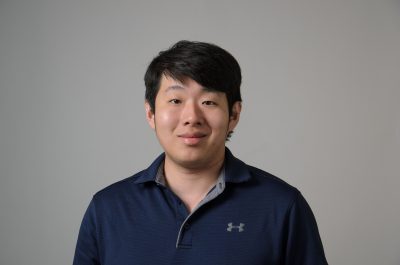
Wesley Zhong has joined the Institute of Materials Science (UConn IMS) as the new lab manager for the Electrical Insulation Research Center (EIRC). His specialties include high voltage safety, electrial insulation testing, partial discharge detection, experiment build and design, extreme environment testing, power electronics testing, technical writing, Lean Six Sigma and equipment maintenance and calibration.
Wesley earned his B.S. in Electrical and Computer Engineering Technology from Purdue University where he served as an undergraduate teaching assistant. Additionally, he served as He worked as a dielectrics specialist at GE Global Research for the past five years designing, building, and running HV dielectric experiments involving aviation, power electronics, and motor/generators design.
Under the direction of Dr. Yang Cao, the Electrical Insulation Research Center has extensive facilities for characterizing the electrical properties of insulating materials used in electrical apparatus including distribution and transmission networks, rotating machinery component, electrostatic/electro-responsive devices, capacitive energy storage, and more.
Please join us in welcoming Wesley to UConn and IMS!